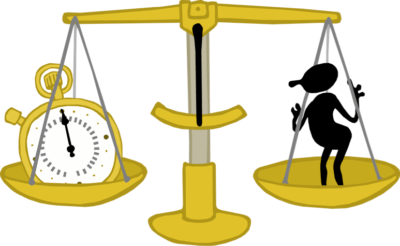Most meeting participants embrace a set of similar values with different priorities. The difference lies in their relative strength, or ranking of the values.
Participants’ rankings however are not static. Their ranking changes based on their perspective at the moment.
Hiring Characteristics as an Example
When selecting, interviewing, and hiring associates, most human relations experts would agree that five of the core characteristics that are sought in new hires include (listed alphabetically):
- Capacity (mental)
- Integrity (moral)
- Knowledge and Experience (physical)
- Motivation (emotional)
- Understanding (intellectual)
Traditional Prioritization
Frequently, Knowledge and Experience filter out and disqualify potential hiring candidates. Next Understanding, typically reflected by educational degrees, may be used to filter more desirable from less desirable candidates. Next, Capacity is tested, frequently using actual test instruments about personality, cognitivity, and comprehension. Integrity is then considered, including perhaps, background checks to verify information and uncover undisclosed facts. Finally, Motivation is considered, but generally accepted, since it is assumed that those seeking employment are motivated by monetary gain, at minimum. Arranged in a sequence of priority, the characteristics line up as follows:
- Knowledge and Experience (physical)
- Understanding (intellectual)
- Capacity (mental)
- Integrity (moral)
- Motivation (emotional)
Potential Prioritization
Pretend you own the company, however. Contrary to the prioritization above, you would probably embrace the following prioritization when hiring a new employee:
- Integrity; because without integrity, all other actions are suspect at best, and dangerous at worst.
- Motivation; because without motivation, all other actions (or inactions) may be shallow.
- Capacity; because without mental capacity, actions may be blind.
- Understanding; because without understanding actions are impotent.
- Knowledge and Experience; Lastly without the attributes above, actions are misdirected or useless.
Note with the re-prioritization above, the complete reversal from Experience as number one to least important as number five. Participants with a bias toward the Traditional Prioritization will conflict, and make building consensus challenging when confronted by participants using the Potential Prioritization, or some other variation.
As a facilitator, what can you do about it? We discuss the proper sequence for building consensus around conflicting prioritization in other articles, The Three Steps to Conflict Resolution: Appeal to Purpose, Active Listening, and Enterprise Objectives.
______
Don’t ruin your career by hosting bad meetings. Sign up for a workshop or send this to someone who should. MGRUSH workshops focus on meeting design and practice. Each person practices tools, methods, and activities every day during the week. Therefore, while some call this immersion, we call it the road to building high-value facilitation skills.
Our workshops also provide a superb way to earn up to 40 SEUs from the Scrum Alliance, 40 CDUs from IIBA, 40 Continuous Learning Points (CLPs) based on Federal Acquisition Certification Continuous Professional Learning Requirements using Training and Education activities, 40 Professional Development Units (PDUs) from SAVE International, as well as 4.0 CEUs for other professions. (See workshop and Reference Manual descriptions for details.)
Want a free 10-minute break timer? Sign up for our once-monthly newsletter HERE and receive a timer along with four other of our favorite facilitation tools, free.

Terrence Metz, president of MG RUSH Facilitation Training, was just 22-years-old and working as a Sales Engineer at Honeywell when he recognized a widespread problem—most meetings were ineffective and poorly led, wasting both time and company resources. However, he also observed meetings that worked. What set them apart? A well-prepared leader who structured the session to ensure participants contributed meaningfully and achieved clear outcomes.
Throughout his career, Metz, who earned an MBA from Kellogg (Northwestern University) experienced and also trained in various facilitation techniques. In 2004, he purchased MG RUSH where he shifted his focus toward improving established meeting designs and building a curriculum that would teach others how to lead, facilitate, and structure meetings that drive results. His expertise in training world-class facilitators led to the 2020 publication of Meetings That Get Results: A Guide to Building Better Meetings, a comprehensive resource on effectively building consensus.
Grounded in the principle that “nobody is smarter than everybody,” the book details the why, what, and how of building consensus when making decisions, planning, and solving problems. Along with a Participant’s Guide and supplemental workshops, it supports learning from foundational awareness to professional certification.
Metz’s first book, Change or Die: A Business Process Improvement Manual, tackled the challenges of process optimization. His upcoming book, Catalyst: Facilitating Innovation, focuses on meetings and workshops that don’t simply end when time runs out but conclude with actionable next steps and clear assignments—ensuring progress beyond discussions and ideas.




